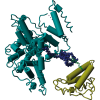A new analysis shows the monkeypox virus (MPXV) is rapidly diverging into several lineages characterised by mutations resulting from continued interaction with the human immune system, suggesting that the virus has been circulating in humans since 2016.

“These observations of sustained MPXV transmission present a fundamental shift to the perceived paradigm of MPXV epidemiology as a zoonosis and highlight the need for revising public health messaging around MPXV as well as outbreak management and control,” write the authors.
Historically, MPXV was described as a zoonotic disease endemic to West and Central Africa that transmits through contact with rodents. The first human cases of the disease were observed in the 1970s and have been predominantly associated with infants and children. Most cases since have been treated as spillover events with low levels of circulation in humans.
However, in 2022, an MPXV epidemic emerged and human mpox cases were detected outside countries with known endemic reservoirs, indicating that it was not solely a zoonotic infection. Comparisons of MPXV genome sequences from 2018 with sequences from the 2022 epidemic have indicated a mutation rate much higher than would be expected for double-stranded DNA viruses.
“Surveillance needs to be global if MPXV is to be eliminated from the human population and then prevented from reemerging,” said the authors.
Image credit | SPLibrary




